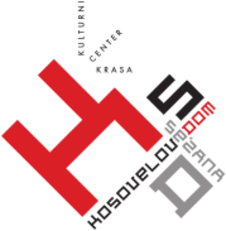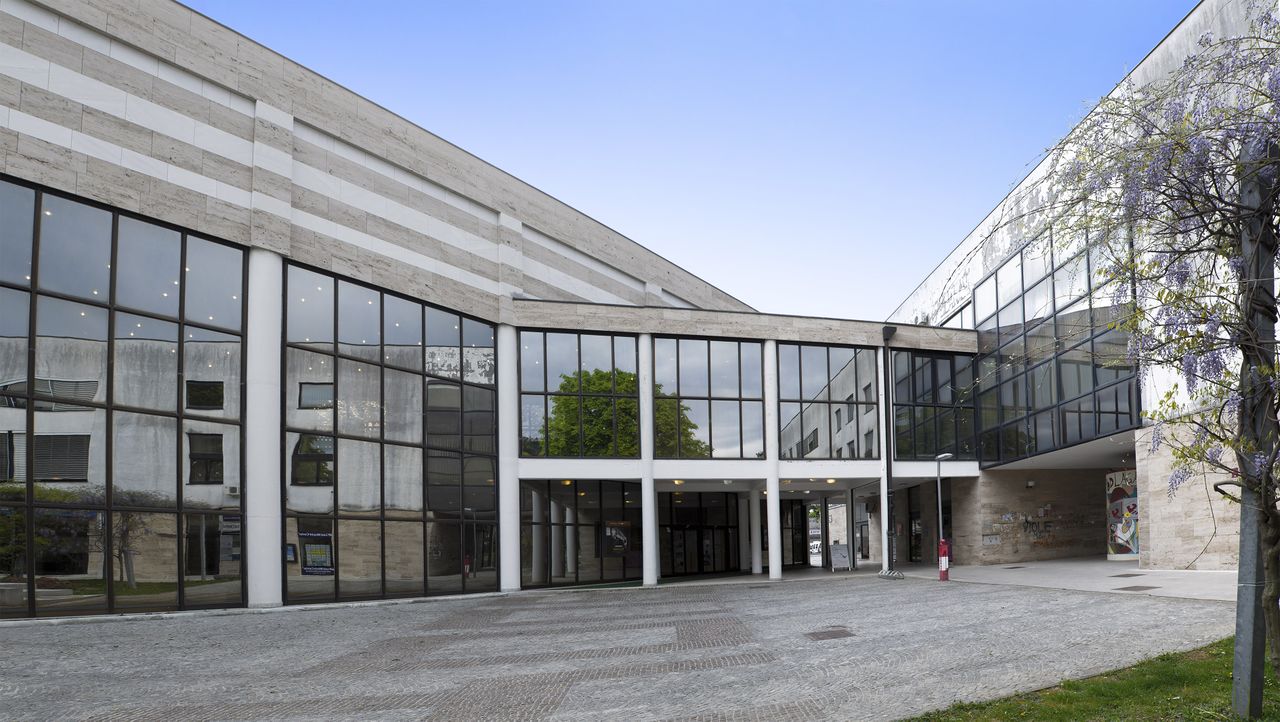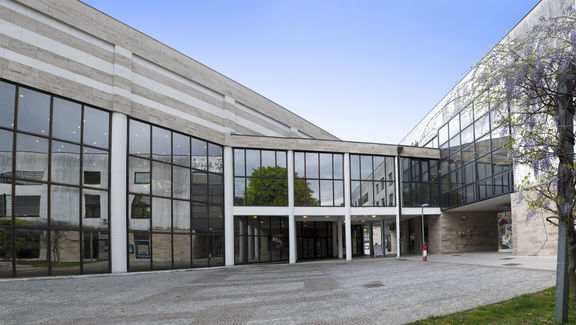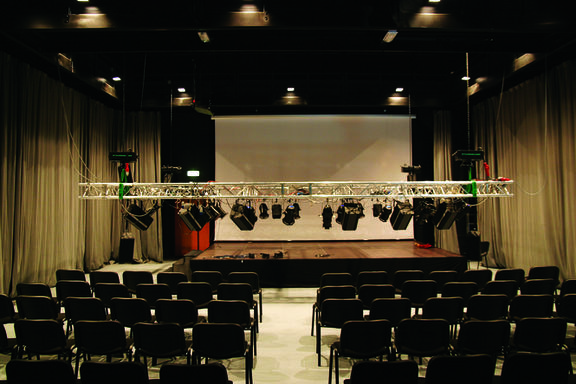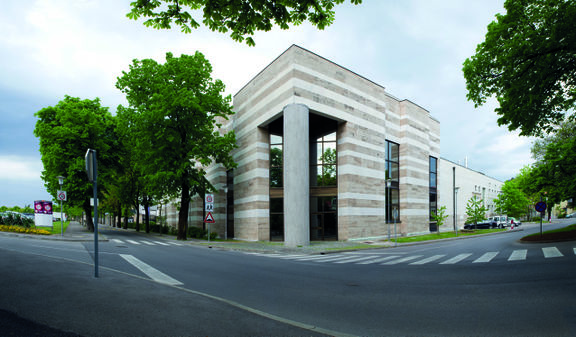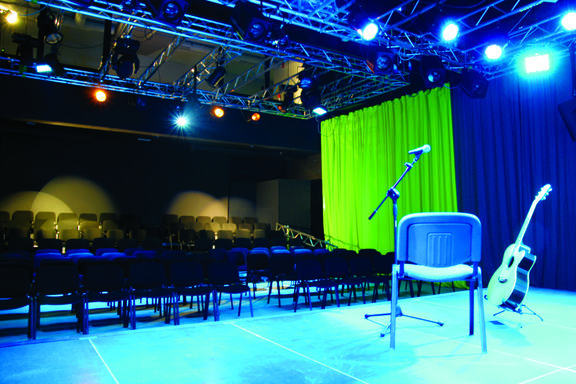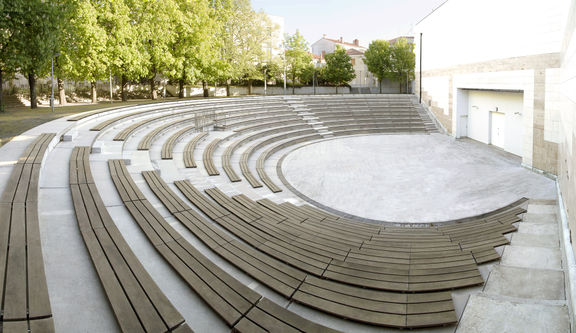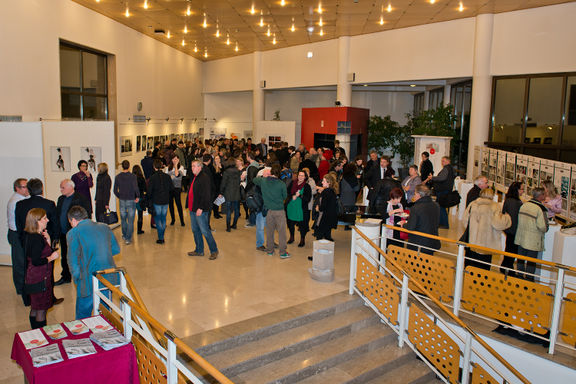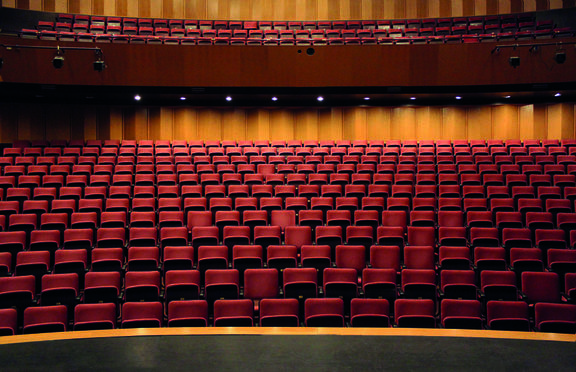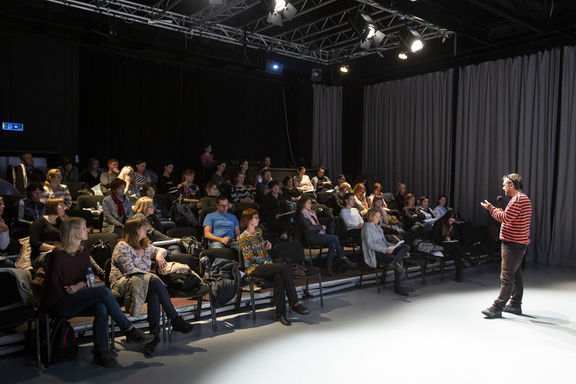Kosovel Culture House Sežana
Activities
The venue has a year long programme of new theatre and music performances, and is very keen on film. Besides a strong focus on art films (partly complemented by screenings of mainstream films), there is also a film education programme that features lectures and workshops. The venue hosts several annual cultural events, for instance the Vilenica International Writers’ Gathering and the Mladifest summer festival.
Kosovelov dom also cooperates with several other Slovene institutions, including theatre houses, regional cultural centres and non-governmental organisations. In 2008 it initiated the establishment of the KUDUS, Association of the Regional Culture Houses which strives to resist the commercialisation of its members' programmes.
Exhibition spaces
The centre incorporates two gallery spaces: the Miro Kranjec Small Gallery (Mala galerija Mira Kranjca) and various lobby spaces for exhibitions; the permanent exhibition of Polde Oblak's large scale paintings, donated to the Municipality of Sežana, is situated in the ground floor.
Venues
The main hall has 437 seats and a large stage with good acoustics fully-equipped for cinema screenings. The middle hall has been designed as a multi-purpose TV studio and can serve as a concert or fashion show venue as well as an exhibition space or a restaurant. The outdoor amphitheatre can accommodate up to 1,000 visitors and twice as much when standing.
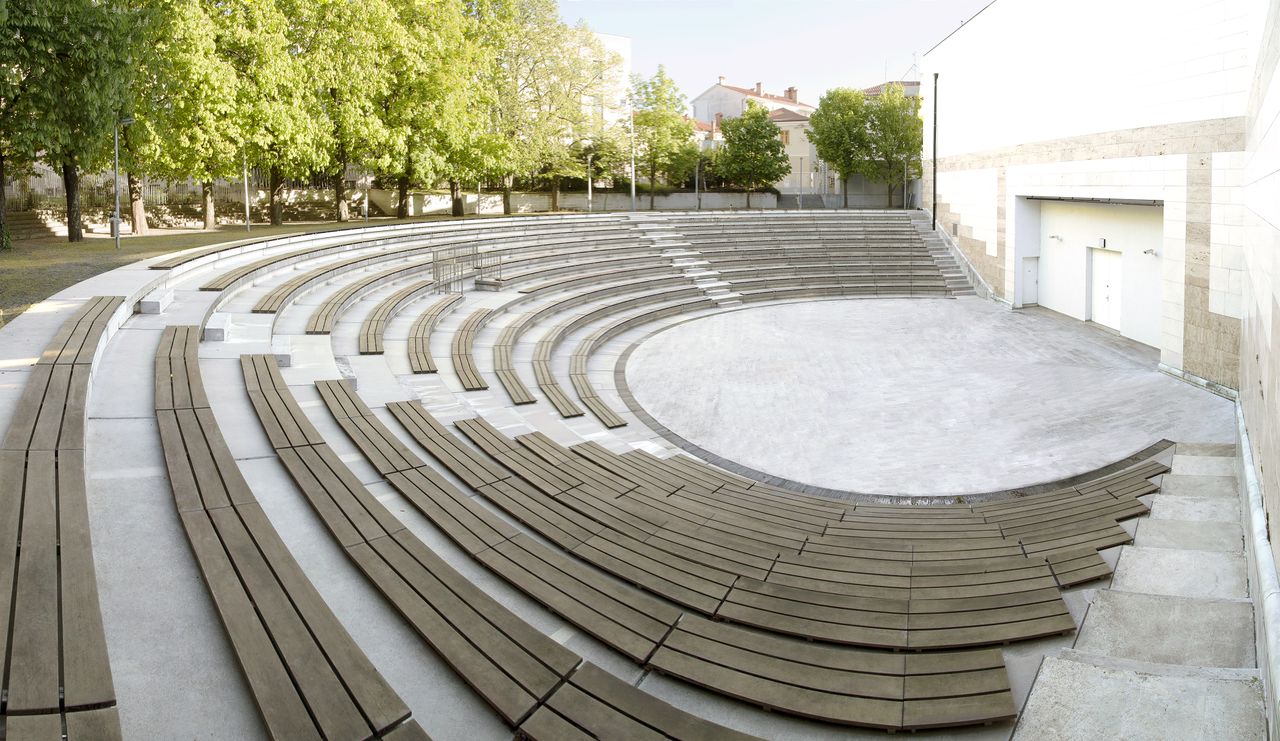
Architecture
The construction of Kosovelov dom started back in 1979, following the plans made by a group of renowned architects Matjaž Garzarolli, Vojteh Ravnikar, Marko Dekleva, Egon Vatovec and Mladen Merčina. However, the place only opened its doors a dozen years later. It was designed to be the cultural centre catering to the whole of Kras and Brkini areas and was as such also meant to establish the town of Sežana as a regional hub.
See also
External links
- Kosovel Culture House Sežana
- KUDUS, Association of Cultural Houses of Slovenia (in Slovene)
- Srečko Kosovel on Wikipedia
